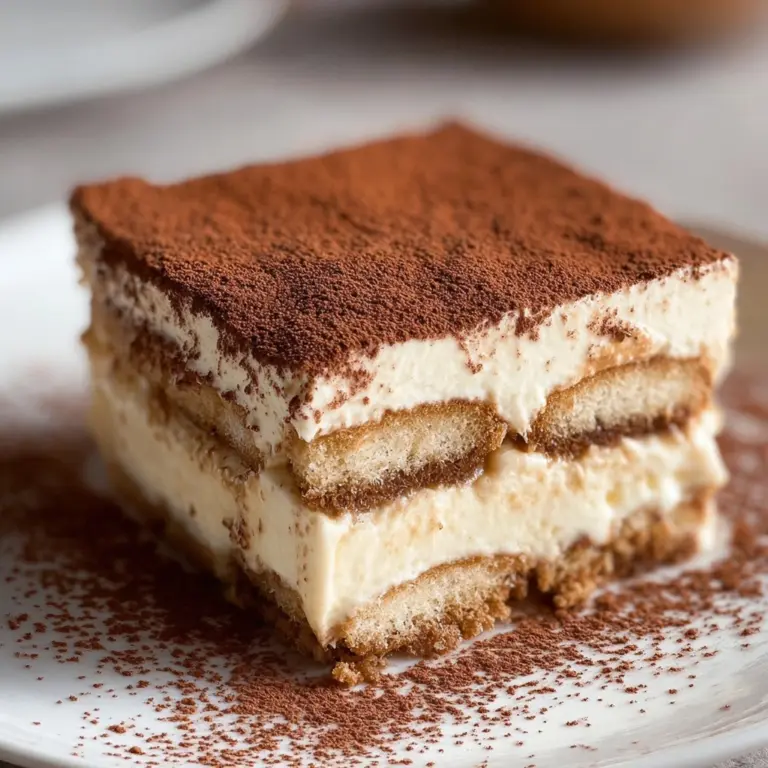How to Make Croissants Recipe
If you’ve ever dreamed about biting into a freshly baked, buttery, flaky croissant, then you are in the right place! This guide on How to Make Croissants will take you step-by-step through the magic of transforming simple ingredients into golden crescents bursting with layers of rich, tender goodness. Trust me, once you master this, you’ll feel like a true artisan baker and your kitchen will smell absolutely irresistible.

Ingredients You’ll Need
The beauty of croissants lies in their simple yet carefully balanced ingredients. Each element plays a crucial role in developing the texture, flavor, and signature flakiness that makes croissants so special.
- Room temperature water (1 cup / 227 grams): Hydrates the dough and activates the yeast for a perfect rise.
- Whole milk (¾ cup / 170 grams): Adds richness and softness to the dough.
- Instant yeast (2-½ teaspoons / 9 grams): The engine behind the dough’s lift and airy layers.
- Granulated sugar (¼ cup / 50 grams): A touch of sweetness to balance the buttery flavor and aid yeast activation.
- Bread flour (5 cups / 600 grams): Provides structure and strength for the dough’s impeccable chew.
- Whole wheat flour (½ cup / 60 grams): Adds a subtle nutty depth without overwhelming the lightness.
- Fine sea salt (1-½ teaspoons / 10 grams): Enhances all the flavors and keeps sweetness in check.
- Softened unsalted European-style butter (4 tablespoons / 56 grams): Incorporated in the dough for tenderness.
- Very cold unsalted European-style butter (1-¾ cups / 395 grams): The star in the laminated butter block that creates those legendary flaky layers.
- Bread flour (¼ cup / 30 grams): Used in the butter block to stabilize texture during lamination.
- Egg yolk (1): Mixed for an egg wash that gives the croissants their irresistible shiny, golden finish.
- Heavy cream (1 tablespoon): Added to the egg wash for extra gloss and richness.
How to Make How to Make Croissants
Step 1: Preparing the Dough and Butter Block
Begin by combining water, milk, yeast, sugar, flours, salt, and softened butter in your mixer bowl. Mix until the dough just pulls away from the sides. Don’t worry if it looks rough at first; knead briefly by hand to fully incorporate the butter, then let the dough rest and rise until it shows signs of proofing. While the dough chills, create your butter block by blending cold butter with a sprinkle of flour to achieve an even, spreadable slab. This butter block is key to the flaky layers you’re after.
Step 2: Laminating the Dough
This crucial step is where the magic happens. Roll out your chilled dough into a rectangle, then wrap the butter block inside, folding dough edges over to seal it like a package. Rotate and roll the dough repeatedly, incorporating a series of folds, first a “double fold” then a “single fold,” chilling in between. This laminating process layers the dough with butter, which will puff up and separate as it bakes, creating those signature croissant flakes.
Step 3: Shaping the Croissants
After the final chilling, roll your dough out one last time and carefully cut it into neat triangles using a ruler and pastry wheel. Gently stretch each triangle’s tip, then roll it up from base to tip, creating crescent shapes. Place them on parchment-lined trays with enough space to proof and grow. This shaping stage is where your croissants begin to take their enticing form.
Step 4: Proofing and Baking
Allow the croissants to proof in a warm environment until they almost double in size and jiggle slightly to the touch. This slow rise is essential for lightness. Just before baking, brush them with a glossy egg wash and spritz the oven with water to create steam, helping develop a crisp, golden crust. Bake at 425ºF initially, then reduce heat to 375ºF and bake until beautifully golden brown and puffed. The heavenly aroma filling your kitchen is the best reward.
How to Serve How to Make Croissants

Garnishes
Though these croissants shine wonderfully on their own, a light dusting of powdered sugar or a drizzle of honey adds an extra touch of sweetness for breakfast or brunch. For savory lovers, a sprinkle of flaky sea salt just after baking enhances the buttery layers in a surprising but delightful way.
Side Dishes
Serving croissants alongside fresh berries, creamy cheeses, or a dollop of homemade jam elevates the experience. Their flaky texture pairs beautifully with smooth spreads and fresh fruit for a balanced, festive table. Don’t forget a steaming cup of coffee or tea to complement the delicate richness.
Creative Ways to Present
Try slicing your croissants horizontally and layering with ham, cheese, and arugula for an upscale croissant sandwich. Or use mini croissants as snack-sized bites filled with chocolate or almond cream. These ideas bring a fun twist to classic enjoyment and are perfect for entertaining friends or family.
Make Ahead and Storage
Storing Leftovers
Fresh croissants are best eaten the day they’re baked. However, if you have leftovers, keep them in an airtight container at room temperature for up to 24 hours to preserve their delicate flavor and texture.
Freezing
To enjoy your croissants later, wrap them tightly in plastic wrap followed by foil, then freeze for up to 2 months. Freeze before or after baking — just be sure to thaw thoroughly before reheating.
Reheating
The best way to revive croissants is in a toaster oven or conventional oven set to 325ºF. Warm them for about 5-8 minutes until heated through and crisp on the outside. Avoid microwaving to maintain that signature flakiness.
FAQs
Can I use regular butter instead of European-style butter?
European-style butter has a higher fat content and less water, which helps create those flaky layers. Regular butter will work but may result in slightly less flakiness and flavor.
Why is the dough both frozen and refrigerated during lamination?
Chilling between folds prevents the butter from melting into the dough, ensuring distinct layers. Freezing firms the dough for easier handling while refrigeration gently cools it.
How long does it take to proof croissants?
Proofing time varies with temperature but typically 2-4 hours at around 72ºF–76ºF until nearly doubled and jiggly is perfect to develop lightness without overproofing.
Can I add fillings to my croissants?
Absolutely! Before rolling, place chocolate chips, almond paste, or ham and cheese near the base of each triangle for delicious filled variations.
What causes croissants to be dense instead of flaky?
The most common reason is skipping or rushing through the lamination and proofing steps. Patience and careful temperature control ensure layers stay separate and dough rises beautifully.
Final Thoughts
Embarking on the journey of How to Make Croissants truly transforms your baking skills and rewards you with something extraordinary. The process is as joyful as the result, and nothing beats pulling warm croissants straight from your oven. So gather your ingredients, preheat your passion, and dive in — your taste buds will thank you!
PrintHow to Make Croissants Recipe
Learn how to make classic French croissants with this detailed step-by-step guide. This recipe covers everything from preparing the croissant dough and butter block to laminating, folding, proofing, and baking the perfect flaky, buttery croissants. Enjoy beautifully golden, tender, and layered pastries fresh from your oven.
- Prep Time: 2 hours
- Cook Time: 26 minutes
- Total Time: 28 hours including chilling and proofing
- Yield: 10 croissants 1x
- Category: Breakfast, Pastry
- Method: Laminating, Baking
- Cuisine: French
- Diet: Vegetarian
Ingredients
Dough Ingredients
- 1 cup (227 grams) room temperature water
- ¾ cup (170 grams) whole milk
- 2–½ teaspoons (9 grams) instant yeast
- ¼ cup (50 grams) granulated sugar
- 5 cups (600 grams) bread flour
- ½ cup (60 grams) whole wheat flour
- 1–½ teaspoons (10 grams) fine sea salt
- 4 tablespoons (56 grams or ½ stick) unsalted European-style butter, softened, cubed
Butter Block
- 1–¾ cups (395 grams or 3–½ sticks) very cold unsalted European-style butter, cut into ½” pieces
- ¼ cup (30 grams) bread flour
Egg Wash
- 1 egg yolk
- 1 tablespoon heavy cream
Instructions
- Prepare Croissant Dough: In the bowl of a stand mixer with a dough hook, combine water, milk, instant yeast, sugar, bread flour, whole wheat flour, salt, and softened butter cubes. Mix on low speed until dough comes together and cleans the bowl sides, about 2-3 minutes. Transfer to a work surface and knead for 2 minutes ensuring butter is fully incorporated; dough will be uneven.
- First Proofing: Place dough in a bowl, cover, and let rise for about 1 hour until showing signs of proofing but not doubled. Adjust time according to room temperature.
- Freeze Dough: Remove dough, deflate gently, and shape into a 7×8” rectangle. Wrap in plastic and freeze for 15 minutes.
- Make Butter Block: Place cold butter pieces and bread flour in mixing bowl with paddle attachment. Mix on low until butter clumps around the paddle (1-2 minutes), then mix on medium 1 more minute until smooth without lumps. Transfer butter mix to a quart plastic bag, flatten to an even 7×8” square with a rolling pin, and remove excess air.
- Chill Dough and Butter: Transfer dough from freezer to fridge and butter block to fridge as well, chill for 1 hour or until below 50°F.
- Laminate Dough – First Fold: Roll dough to 8×15” rectangle on floured surface, place butter block in center. Fold top and bottom dough edges over butter so edges meet and overlap slightly; pinch seams to seal. Rotate dough 90° clockwise so seam is vertical. Roll to 8×22” rectangle, brush off excess flour. Trim edges for straight lines. Fold top short side halfway down, bottom short side halfway up, then fold bottom over top forming a closed book. Press lightly and wrap in plastic. Freeze 15 minutes, then refrigerate 15-60 minutes until chilled.
- Laminate Dough – Second Fold: Place dough on floured surface, seam facing right. Roll to 8×22” rectangle. Fold top 1/3 down, bottom 1/3 up (business letter fold). Wrap tightly and freeze 15 minutes, then refrigerate 15-60 minutes until chilled.
- Pre-shape & Rest: Roll dough to approx 10×15” rectangle, wrap tightly, and freeze 15 minutes. Then refrigerate for at least 4 hours or overnight for best results.
- Final Roll and Cut: Lightly flour surface and roll dough to 10×20” rectangle. Trim uneven edges with ruler and pastry wheel. Mark and cut 9 isosceles triangles using measured notches. Combine two half-triangles into one for a total of 10 triangles.
- Shape Croissants: Gently stretch each triangle’s tip and base without squashing layers. Roll from base to tip, keeping tip centered, and tuck rolled tip under croissant base. Repeat for all triangles.
- Proof Croissants: Place 5 croissants per parchment-lined sheet pan, loosely cover with plastic wrap, and proof at 72ºF-76ºF for 2-4 hours or until nearly doubled and jiggly.
- Preheat Oven and Prepare for Baking: Place oven racks in lower middle and middle positions. Preheat to 425ºF.
- Egg Wash & Steam: Remove plastic wrap, brush croissants’ smooth tops with egg yolk and heavy cream mixture (avoid exposed edges). Spray cold water around croissants on parchment to create steam in oven.
- Bake Croissants: Reduce oven temperature to 375ºF and bake for 24-26 minutes, rotating trays halfway through, until croissants are golden brown and flaky.
- Cool and Serve: Remove from oven and let cool briefly before serving. Enjoy fresh for best texture.
- Storage & Refreshing: Store baked croissants at room temperature in a covered container for up to 24 hours. To refresh, warm gently in a toaster oven.
Notes
- Use European-style unsalted butter for best lamination and flavor due to higher fat content.
- Instant yeast helps with a reliable rise and can be mixed directly with flour and liquids.
- The flour dusting during rolling should be minimal to prevent tough dough.
- Proper chilling between folds is crucial to maintain distinct buttery layers and achieve flakiness.
- Ensure the dough and butter temperatures are below 50°F before laminating to prevent butter melting.
- Proof croissants in a warm, draft-free area; if too warm, proofing will be faster and may overproof.
- Adding steam in the oven during baking helps croissants rise fully and develop a crisp crust.
- Croissants are best eaten fresh but can be stored and refreshed by gentle warming.
Nutrition
- Serving Size: 1 croissant (approx. 85 grams)
- Calories: 320 kcal
- Sugar: 6 grams
- Sodium: 180 mg
- Fat: 18 grams
- Saturated Fat: 11 grams
- Unsaturated Fat: 6 grams
- Trans Fat: 0 grams
- Carbohydrates: 33 grams
- Fiber: 1.5 grams
- Protein: 6 grams
- Cholesterol: 70 mg
Keywords: croissants, laminated dough, French pastry, breakfast pastry, homemade croissants, flaky croissants, pastry recipe








